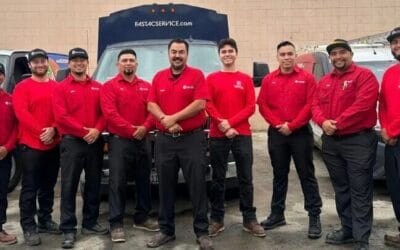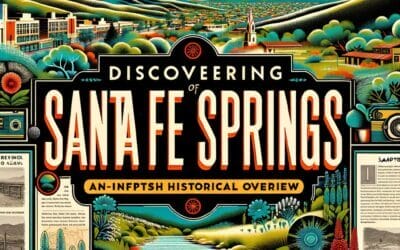Welcome fellow explorers and history enthusiasts to our enlightening post, ”Exploring the History of Southern California’s 605 Freeway”. This descriptive narrative not only delves into the intriguing background of this iconic roadway but also reflects the evolutionary trajectory of Southern California itself. As we unravel the colorful chronicles and the extensive journey of this freeway, you will gain valuable insights into California’s progressive ethos, connections between various cities, and insights into how transportation has shaped our societies and neighborhoods. Whether you’re a student, a history enthusiast, or a curious local, this post serves as an enriching source of information that will support academic projects, enhance your knowledge pool, or simply feed your curiosity about your local surroundings. Step into an exciting journey back in time, uncovering facts and figures that make the 605 Freeway more than just a stretch of asphalt and concrete. This is not just a story of a freeway; it’s the tale of Southern California!
Unveiling the Origins of the Iconic 605 Freeway
The 605 Freeway, officially christened as the San Gabriel River Freeway, winds its way through the heart of Southern California. Named after the San Gabriel River, this vital artery of transportation spans over 27 miles, connecting the powerhouse counties of Los Angeles and Orange. Tracing its early beginnings back to 1964, the Freeway has had an active part in shaping the transport dynamics of the region.
The Freeway was conceived as a part of California’s expansive highway system under the jurisdiction of the California Department of Transportation (Caltrans). Its origin can be attributed to the local leaders’ vision of creating a seamless transportation network, signaling a new era of growth and connectivity for Southern California. Although several sections of the Freeway were open by 1964, its completion did not occur until 1971, marking seven years of meticulous planning, designing, and construction.
- Year of Conception: 1964
- Completion Year: 1971
- Length: Over 27 Miles
- Served Counties: Los Angeles and Orange
Influenced by a mid-century mindset that cherished speed and modernity, the design of the Freeway embodies the optimism of the Space Age. The engineering marvel was celebrated for its innovative use of grade separations, direct access ramps, and state-of-the-art traffic control devices. With broad lanes and modern safety features, it was hailed as a model of freeway design.
| Design Highlights: | Grade separations, Direct access ramps, Advanced traffic control devices |
|---|---|
| Safety Features: | Broad lanes, Modern safety amenities |
| Significance: | Model of Freeway design, Embodiment of mid-century optimism |

Significant Milestones and Challenges during Construction of the 605 Freeway
The construction of Southern California’s 605 Freeway, also known as the San Gabriel River Freeway, was a process studded with significant milestones and complex challenges. One of the significant achievements during its construction was that the freeway connected five separate counties, providing a much-needed transportation link between them. These counties include Los Angeles, Orange, Riverside, San Bernardino, and Ventura. Along the freeway, significant infrastructures like the Pico Rivera Sports Arena and the Whittier Narrows Recreation Area were developed, strengthening the local economy and providing recreational facilities for the citizens.
However, the construction was not without its hurdles. One primary challenge was related to the displacement and resettlement of residents. These relocations were necessary to make way for the freeway, which led to various social, emotional, and financial implications for the affected families. Moreover, the sheer scale of the project, spanning over 27 miles and requiring intricate technical skills and understanding, posed other significant challenges.
| Significant Milestones | Challenges |
|---|---|
| Connected five counties | Displacement and resettlement |
| Development of major infrastructures | Scale of the project |
To solidify this understanding, it’s also important to note the unforeseen environmental impacts. The construction resulted in loss of wildlife habitats and inevitable changes to the ecosystem surrounding the freeway. This sparked conversations about the importance of sustainable development and responsible construction practices, forcing the industry to reconsider their methods and impacts.
Unique Architecture and Design Aspects of the 605 Freeway
The 605 freeway, also known as San Gabriel River Freeway, boasts a variety of fascinating architectural and design aspects that sets it apart from other highways in Southern California. The 605 freeway was constructed during the 1960s, a period influential in shaping modern design and architectural innovations. The freeway’s alignment deliberately parallels the San Gabriel River, with several of its interchanges and bridges architected to cater for the region’s frequent flooding.
With its length extending to 27 miles, the 605 Freeway has several unique structural designs at the interchanges. One notable example is the ‘flyover-style’ connector ramps, for instance, the ramps connecting I-605 with I-10. These ramps exhibit modern engineering techniques of the ’60s, favoring vertical stack designs over older cloverleaf connections. Other unique design aspects include:
- High Occupancy Vehicle lanes: These lanes are designed to encourage carpooling, reducing the number of vehicles on the highway and thus the overall carbon footprint. The design of these lanes allows for easy and swift transition between mainlines and HOV lanes.
- Landscaping: To complement the surrounding natural beauty, the freeway features an aesthetic landscaping design inspired by the nearby San Gabriel River.
| Freeway Segment | Construction Year |
|---|---|
| I-605 and I-10 | 1964 |
| I-605 and I-210 | 1971 |
| I-605 and SR 22 | 1969 |
Each segment of this freeway tells a different story of the region’s growth and progress. All together, they form a vital part of the extensive network of highways that make up the Southern California landscape, a testament to the power of innovation and clever design.
Environmental Impact and Sustainability Measures Associated with the 605 Freeway
From its inception in the early 1960s, the 605 Freeway has raised substantial environmental concerns. Despite providing invaluable convenience and connectivity in Southern California, it has been tied to significant air, land, and noise pollution, disrupting the local ecosystem and impacting the quality of life for nearby residents. Roadway runoff, containing harmful pollutants from vehicles, directly seeps into adjacent lands and infiltrates the groundwater. Besides, the freeway’s noise pollution has also been a burdensome issue, affecting local wildlife and creating potential health risks for inhabitants living within the vicinity.
In response to these adverse effects, several measures have been undertaken over the years to reduce the environmental impact and promote freeway sustainability. For instance, stormwater management systems have been implemented to treat roadway runoff before it enters local water bodies or seeps into the ground. Improvements in vehicle emission standards and the growing popularity of electric vehicles have also played a crucial role in mitigating air pollution.
| Velocity Increase | Noise Barrier Introduction | Wildlife Crossings |
|---|---|---|
| N/A | First implemented in the 1980s, these barriers help to deflect highway noise away from residential areas. They continue to be updated and expanded as part of the freeway’s ongoing development. | This includes the construction and maintenance of specialised structures that allow local wildlife to safely cross the freeway without risking collision with passing vehicles. |
| N/A | These crossings, developed as part of an effort to sustain local biodiversity, form an integral part of the freeway’s commitment to lessening its environmental footprint. |
Efforts are continually undertaken to scrutinise and enhance these environmental safeguards, ensuring the freeway evolves with technological advances and remains a sustainable part of Southern California’s transport system.
Navigating through the Current Landscape of the 605 Freeway
Delving into the current landscape of Southern California’s famed 605 Freeway is akin to taking a journey through time. This 27-mile stretch of highway, named the San Gabriel River Freeway, has been a significant part of the region’s history. Since its inception in 1964, it has seen countless changes – some subtle, others far more dramatic.
When traversing the 605 today, one can quickly notice a dynamic quilt of neighborhoods and communities it threads together. Starting from its southern junction with the I-405 in Seal Beach, it seamlessly connects you to cities and boroughs including, but not limited to, Long Beach, Cerritos, and Whittier, till the northern tip touching the Foothill Freeway (I-210) in Duarte.
| 605 Freeway Intersections | City Names |
|---|---|
| I-405 junction | Seal Beach |
| I-10 intersection | Baldwin Park |
| I-210 junction | Duarte |
Not just this, the 605 Freeway also plays a critical role in connecting the region to a host of educational, cultural, and economic hubs. From serving busy professionals commuting to bustling downtown Los Angeles, to students heading to institutions like the Cerritos Community College and Whittier College, it exemplifies Southern California’s characteristic blend of energy and opportunity. It’s also a commercial lifeline, linking the ports of San Pedro Bay with the sprawling LA Basin, strongly contributing to the local economies.
While it’s undeniable that the 605 Freeway has changed in tandem with the region’s landscape over the years, its role as a vital artery within Southern California’s transportation network remains consistent. It is a testament to the area’s evolution and a vital link that shapes the daily life of many Angelinos.
Future Perspectives and Recommendations for the Southern California’s 605 Freeway
Looking forward to the future of 605 Freeway, there are several significant opportunities for improvement that can greatly enhance commuting experience. With the increasing population in Southern California, it has become more vital than ever to develop strategic methods to manage the rising demand for effective transport channels.Thus, it is recommended that government and related organizations prioritize implementing highway expansions, promote public transport, encourage carpooling, and adopt smart technologies.
- Highway Expansion: The expansion of additional lanes would alleviate traffic congestion by improving the freeway’s capacity.
- Promote Public Transport: By encouraging more people to use public transport, we can reduce the number of cars on the road.
- Encourage Carpooling: Carpooling is an eco-friendly and practical way to lessen the volume of traffic.
- Adopt Smart Technologies: Technologies such as Intelligent Traffic System (ITS) and other intelligent transport systems can help manage traffic in a more efficient way.
Not only will these recommendations improve road efficiency, but they also offer various socio-economic benefits. They promote sustainability, contribute towards a cleaner environment, and make commuting more cost-effective. The suggestions will also play a vital part in the larger battle against global warming and air pollution. The next table presents a summary of the necessary steps to take our freeway system to a better future:
| Action | Benefit |
|---|---|
| Highway Expansion | Alleviate Traffic Congestion |
| Promote Public Transport | Reduce Vehicle Numbers on the Road |
| Encourage Carpooling | Lowers Traffic Volume |
| Adopt Smart Technologies | Efficient Traffic Management |
Wrapping Up
In closing, the 605 Freeway has played a key role in the development and connectivity of Southern California. Its rich history paints a picture of progress, challenge, community input, and continual change. Understanding the past indeed lends greater appreciation for the present, providing a fascinating glimpse into the region’s evolution and growth. We hope you’ve enjoyed this journey down memory lane, and next time you travel down the 605 Freeway, remember its history and appreciate its role in shaping today’s Southern California. Whatever your destination, we trust this knowledge will enrich the journey. Safe travels, and take a moment to appreciate the road that brings us all together.



